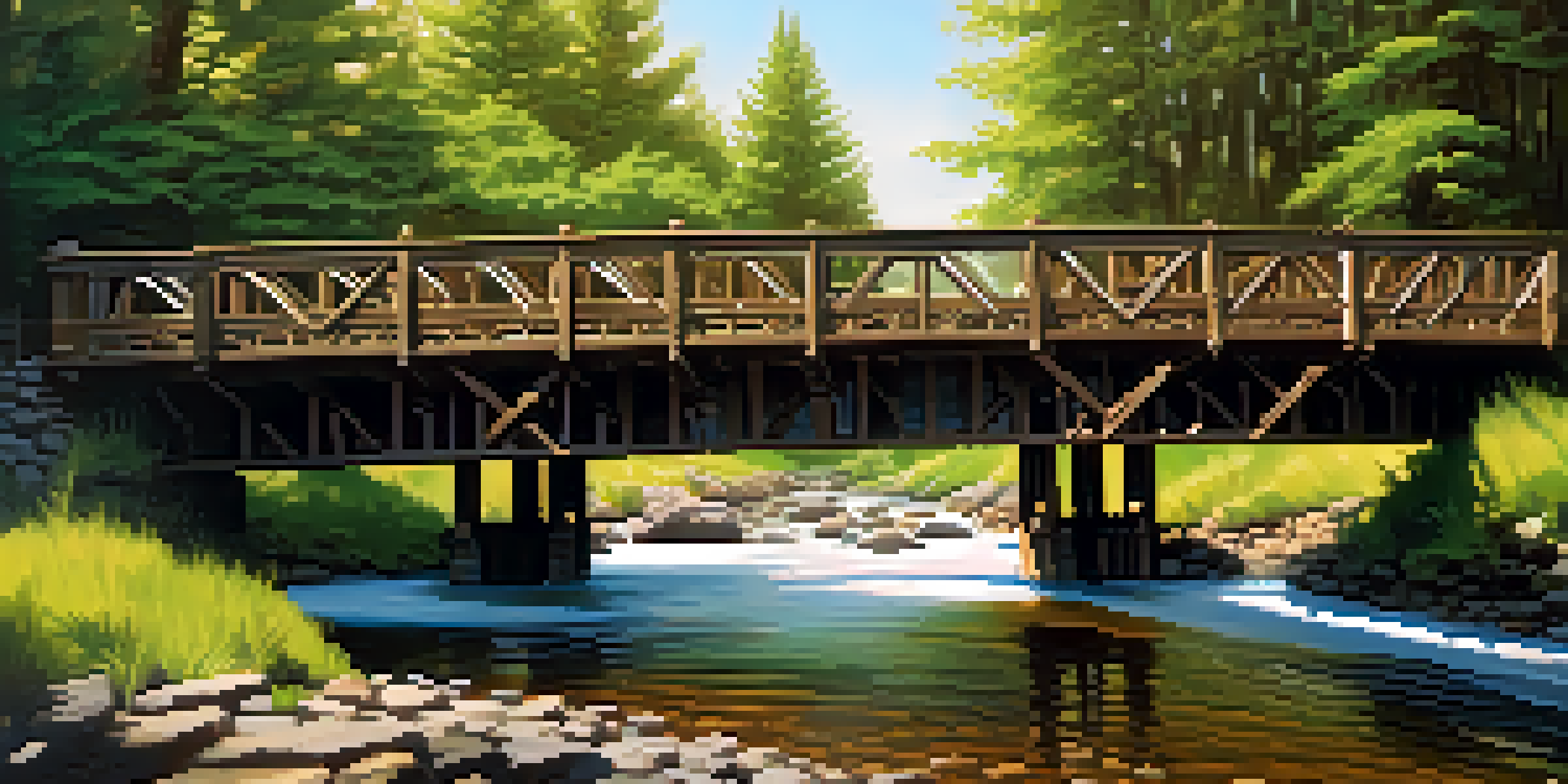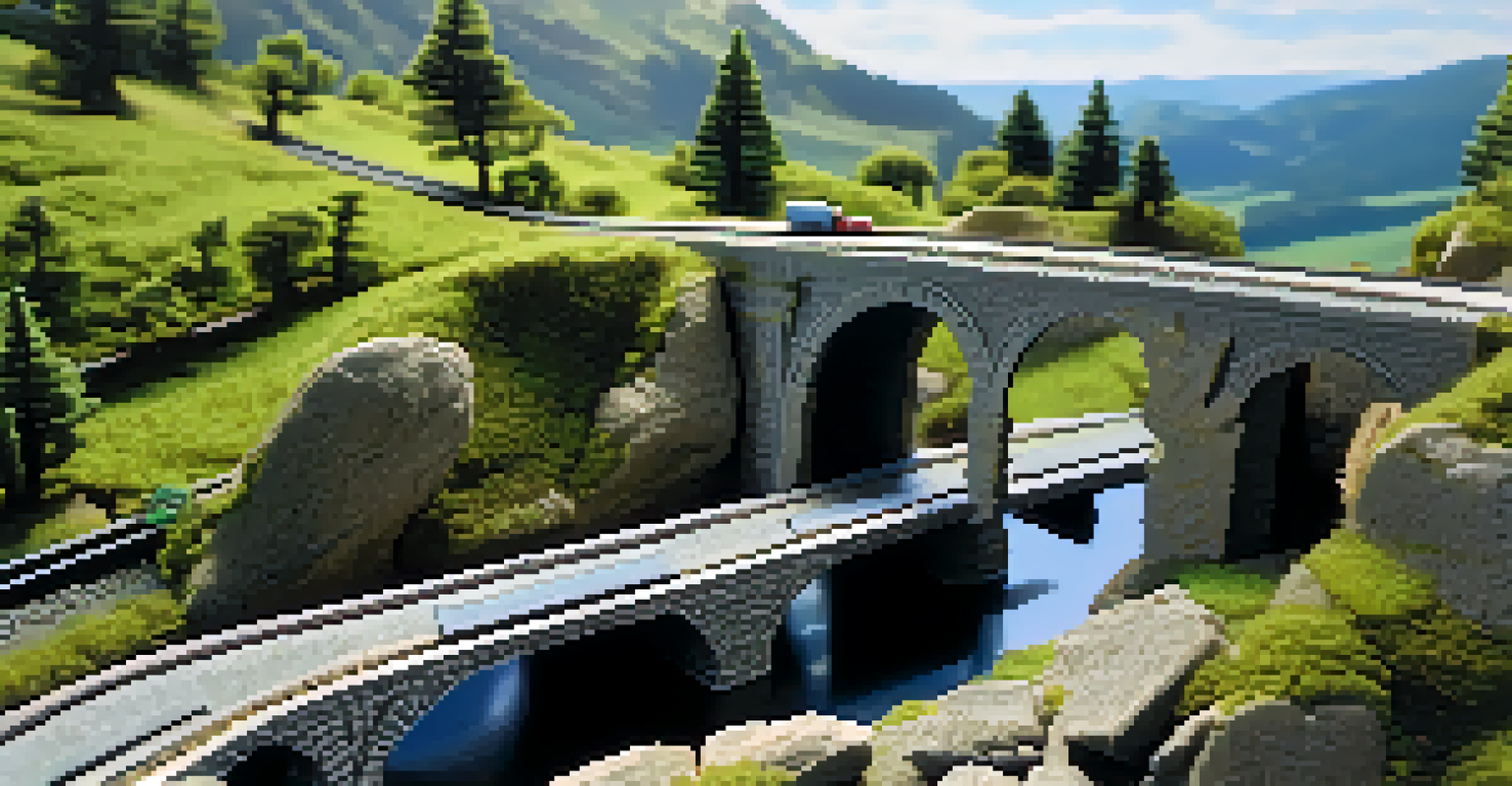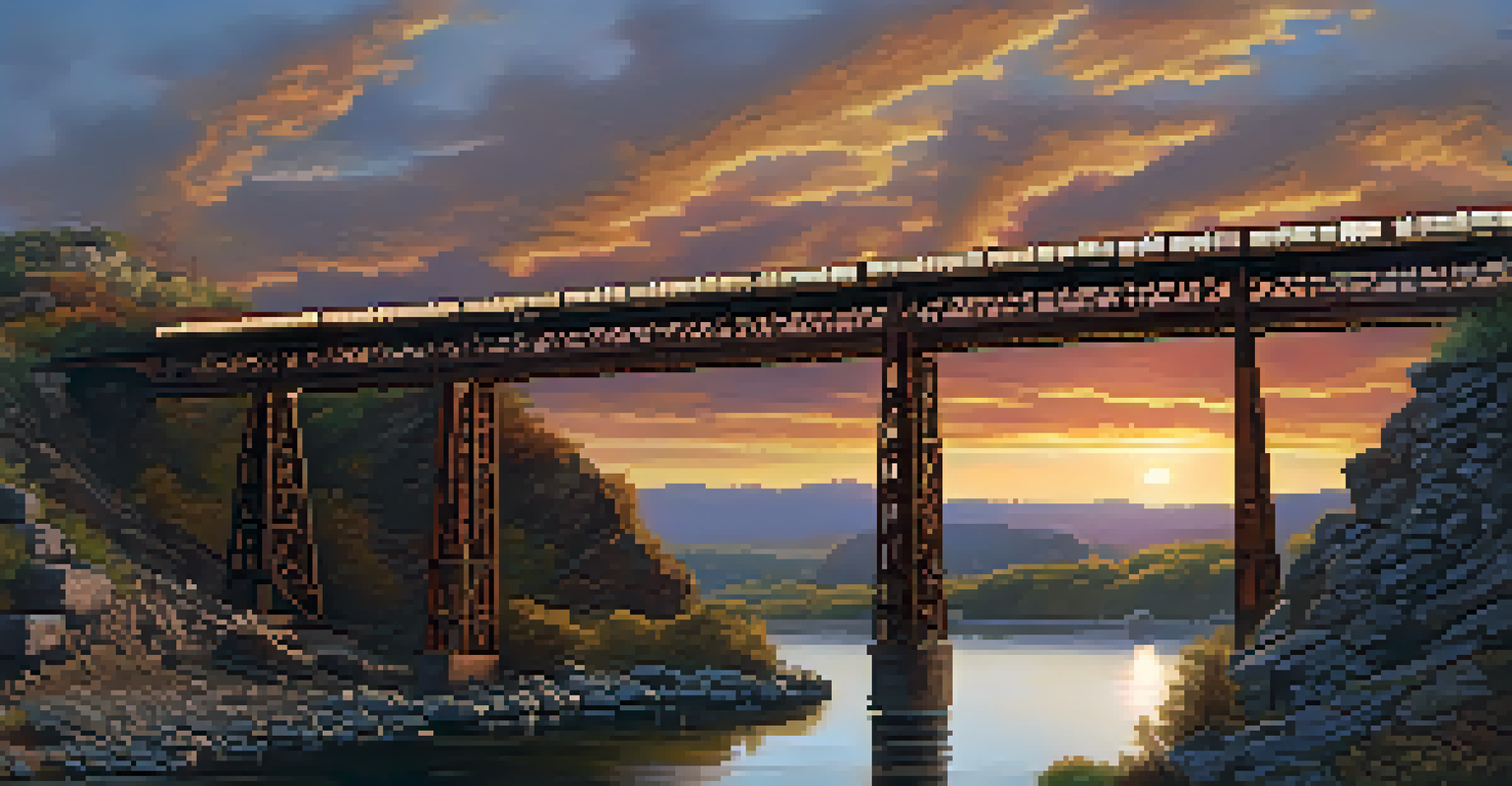Building Bridges: Engineering Techniques for Model Railroads

Understanding the Importance of Bridges in Model Railroads
Bridges are not just functional elements in model railroads; they add charm and character. They enable trains to traverse gaps, whether it’s a river, a valley, or an overpass, bringing a sense of realism to your layout. Without these structures, your model railroad would feel incomplete and less engaging.
A bridge is a symbol of a journey, a connection between two places, and a pathway to new experiences.
Think of bridges as the connective tissue of your railroad landscape. They tie different sections together, creating a seamless flow for your trains. Additionally, well-designed bridges can become focal points, drawing the eye and enhancing the narrative of your model.
Incorporating bridges into your layout allows for creative storytelling. Whether it's a grand stone arch or a simple wooden trestle, each bridge can represent a unique feature of your imagined world. This makes the process of designing and building bridges a rewarding experience.
Choosing the Right Type of Bridge for Your Layout
There are various types of bridges to consider, each with its own aesthetic and functional purposes. Common options include beam bridges, arch bridges, and truss bridges, each offering different advantages for modelers. Choosing the right type depends on your layout's scale, theme, and terrain.

For instance, a truss bridge could be ideal for a rugged mountainous area, while an arch bridge might suit a picturesque countryside. Understanding the characteristics of each type will help you make informed decisions that enhance your model’s authenticity.
Bridges Add Charm to Model Railroads
Bridges enhance the realism and narrative of model railroads, making the landscape feel complete and engaging.
You can also blend different styles to create a more eclectic look. Mixing bridge types not only adds visual interest but also allows for greater flexibility in navigating your railroad's unique challenges. Remember, the goal is to create a cohesive yet diverse environment.
Essential Materials for Building Model Railroad Bridges
The materials you choose for your bridge can significantly impact its appearance and durability. Common materials include wood, plastic, metal, and even cardboard. Each material offers distinct benefits and can be used creatively depending on your design.
The beauty of a bridge lies not only in its structure but in the stories it connects.
For example, wood provides a classic look and is easy to work with, making it perfect for traditional trestle bridges. On the other hand, metal can add a modern touch and durability, ideal for industrial-themed layouts. Combining materials can also yield unique textures and styles.
When selecting materials, consider the scale of your model and the level of detail you want to achieve. High-quality materials can elevate the overall look of your bridge, making it a standout feature in your railroad. Experimenting with different textures and finishes can lead to stunning results.
Design Techniques to Enhance Bridge Realism
To create a bridge that looks authentic, focus on the design aspects that mimic real-life engineering. Pay attention to proportions, angles, and structural components. A well-thought-out design will not only look great but also support the weight of your model trains.
Using reference images of actual bridges can be incredibly helpful during the design phase. Analyzing how real bridges are constructed will inspire your approach, leading to more realistic details in your model. This consideration can elevate your bridge from a simple structure to a work of art.
Choosing the Right Bridge Type
Selecting the appropriate bridge type based on your layout's scale, theme, and terrain is essential for authenticity.
Additionally, adding details like railings, support beams, and weathering effects can significantly enhance realism. These elements create depth and interest, making your bridge a captivating part of your overall layout. Small touches often make the most significant difference.
Techniques for Building Strong and Durable Bridges
Building a bridge that stands the test of time requires careful attention to construction techniques. Start with a solid foundation, as this is crucial for stability. Using sturdy joints and secure fastenings will ensure your bridge can withstand the weight of moving trains.
Consider employing methods such as reinforced joints or using adhesives that are suitable for your materials. This extra care in construction will provide peace of mind and longevity to your bridge. Remember, the goal is to enjoy your model without worrying about structural failures.
Regular maintenance is also vital. Inspect your bridges periodically for any signs of wear or damage and make necessary repairs. This proactive approach will keep your model railroad in top condition, allowing you to enjoy your creation for years to come.
Painting and Finishing Touches for Your Bridge
Once your bridge is built, it’s time to bring it to life with paint and finishing touches. The right colors can enhance realism, so consider the natural environment when choosing your palette. Earthy tones for wood and metallic finishes for steel can create striking contrasts.
Weathering techniques can also add character, making your bridge appear as if it has withstood the elements over time. Techniques such as dry brushing, washes, and adding rust effects can transform a plain structure into a lifelike model. Don’t be afraid to experiment with different finishes to achieve your desired look.
Finishing Touches Enhance Realism
Painting, weathering, and strategic lighting can transform a bridge into a stunning centerpiece of your model railroad.
Lighting can further elevate the visual appeal of your bridge. Adding LED lights or strategically placed spotlights can highlight details and create a dramatic effect during nighttime operations. These finishing touches will make your bridge a stunning centerpiece in your model railroad.
Showcasing Your Bridge in the Model Railroad Layout
After investing time and effort into building your bridge, showcasing it effectively is crucial. The placement within your layout can dramatically influence its visibility and impact. Positioning it in a way that allows for easy viewing from different angles can enhance the overall experience.
Creating a scenic environment around your bridge can further integrate it into the layout. Adding trees, water features, or even mini figures can bring your scene to life, making it more immersive. Think of your bridge as a stage, and the surrounding elements as the supporting cast.

Finally, consider sharing your creation with fellow modelers. Whether through social media, forums, or exhibitions, showcasing your bridge can inspire others and foster a sense of community. Your hard work can spark conversations and even lead to new ideas and collaborations.